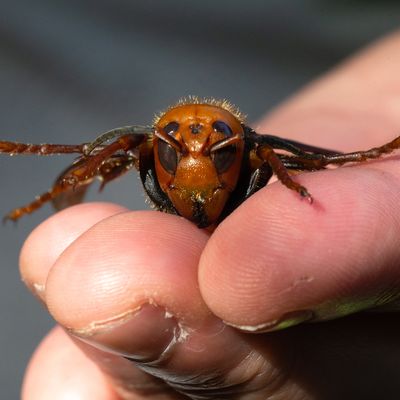
It is officially October in hell, and to enhance the spooky ambiance, the murder hornets have returned to haunt us. Well, really, they never left — maybe some of us simply presumed them dead, buried under the weight of … everything else that has happened lately. Unfortunately, the murder hornets are very alive; in fact, Washington residents spotted three this week.
As a refresher, the term “murder hornets” refers to Asian giant hornets, an unreasonably large species of insect with a horrible armored body. Queens can grow up to two-inches long, about an inch longer than a hornet has any business being. They delight in annihilating bees and can reportedly plow through about 40 in a single minute, feeding on the thoraxes and leaving a pile of severed heads as their calling card. Murder hornets earned their nickname because of their insatiable bee bloodlust, and while they could potentially kill a human if they went wild with their shivlike stingers, people interest them less than hives. Still, a sting from a murder hornet reportedly feels like “hot metal driving into [the] skin,” according to the New York Times.
Native to South Korea, Taiwan, and Japan, murder hornets arrived in the United States roughly a year ago, setting up shop in Washington state in late 2019. Reports of “thumb-size” hornets trickled in as fall faded into winter, and picked back up this past May. Now, after a few eerily quiet weeks without any murder hornets at all, three more have been spotted in Whatcom County, Washington. Look at them:
So, yes, now you see what I mean about them being way too big. Unfortunately, the Washington State Department of Agriculture captured only two of the specimens reported this week, while the third was photographed laying siege to a wasp nest. They’re asking residents to log information on new sightings immediately, and are setting traps in an attempt to contain their spread. Still, these three bring the total number of sightings in the state up to 12. It also feels important to note here that September is apparently mating season for murder hornets, and 2020 still has three months to work out its spectacular finale. Watch out!





